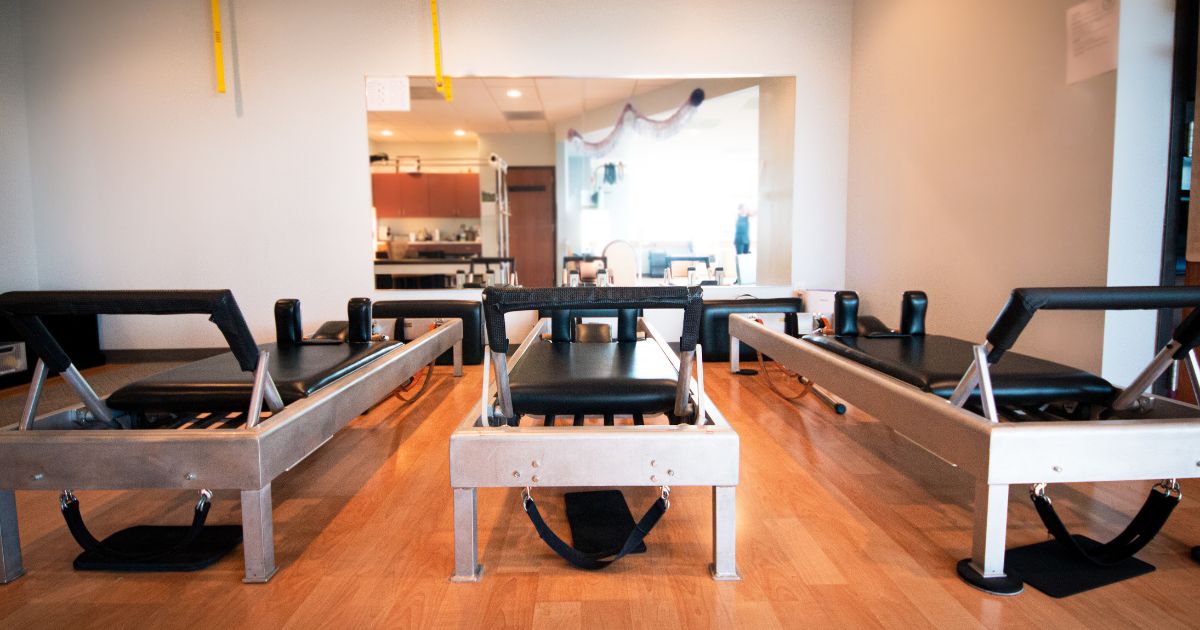In the world of fitness, there’s a saying that resonates deeply with many practitioners: “Pilates is simple but not easy.” This phrase encapsulates the essence of Pilates – a practice that may appear straightforward at first glance, yet requires dedication, precision, and perseverance to master. As someone who transitioned from a career in pharmacy to teaching Pilates, I’ve come to appreciate the profound truth behind this statement. Let’s delve into what makes Pilates a unique blend of simplicity and challenge, and why this duality is key to its effectiveness.
The Simplicity of Pilates
At its core, Pilates focuses on a few fundamental principles: concentration, control, centering, flow, precision, and breathing. These principles guide every movement and ensure that practitioners are engaging their bodies mindfully. Let us not forget that there are also 5 Part of the Mind that play a vital role in keeping the work fresh and alive and not boring. I wrote a blog about it. Here is the link, and you can read the blog I wrote about it.
The exercises themselves often involve basic movements—flexing, extending, side bending and rotating the body in various ways. This simplicity is one of the reasons Pilates is accessible to people of all ages and fitness levels.
For instance, a basic Pilates exercise like the “Hundred” involves lying on your back, lifting your head and shoulders, extending your legs, and pumping your arms. It’s a straightforward sequence, yet it engages the core muscles deeply and effectively. This simplicity allows practitioners to focus on the quality of their movements rather than getting lost in complex choreography.
The Challenge of Precision
While Pilates exercises may appear simple, over time, we are learning to deepen our awareness which in turn requires more work within each movement and is what makes the practice challenging. Pilates demands a high level of body awareness and control. Each movement is deliberate and controlled, requiring practitioners to engage specific muscles and maintain proper alignment. The Pilates principles are what transforms basic exercises into powerful tools for building strength, flexibility, and endurance.
Take the “Teaser” exercise as an example. It involves balancing on your sit bones while extending your legs and reaching your arms towards your toes. It’s a seemingly simple pose, but it requires a strong core, balance, and control. The challenge lies in performing the movement with perfect form and without compensating with other muscles. What can go wrong? well, for example if your roll up is tough to do and you cannot roll up smoothly but you “jerk” yourself up, then the teaser is even harder. This could indicate that your spine could be stiff and hard to articulate and/or that your abdominals are weak. You could also be dominating with your hip flexors to roll up and therefore not using your muscles in a more balanced way. I know your hip flexors are going to work here, but with Pilates we don’t want them to be taking over.
The Importance of Consistency
One of the keys to mastering Pilates is consistency. First, let me say that I really don’t like using the word “master” here in Pilates because it brings with it the thought that you have figured it all out. Pilates is the journey that never, ever ends. A pet peeve of mine personally since anyone in the Pilates industry can call themselves a “master trainer.”
Because the exercises are simple in design, they can be practiced regularly without overwhelming the body. However, the challenge comes in maintaining that regular practice and continually striving for more. The more you practice, the more you build your strength, flexibility, and control. The better you get. Done is better than perfect.
Consistency also allows for progressive improvement. As you become more familiar with the exercises, you can focus on refining your form and increasing the intensity of your practice. This gradual progression helps prevent injury and ensures that you’re building a solid foundation. Then, when you add in more challenging exercises, say some intermediate and advanced moves, you are ready for them and don’t struggle. I’ve seen it happen before when someone isn’t ready and as a result they are not successful and it leaves them feeling defeated and a failure. I personally know this as when I went through my trainings I was not strong enough and it showed up in certain advanced exercises. This would be what I call a “revealing” exercise. Something went awry. Back to the drawing board! I will save that for another blog!
Embracing the Journey
Understanding that Pilates is simple but not easy helps practitioners embrace the journey. It encourages patience and persistence, reminding us that progress comes with time and effort. The simplicity of Pilates allows for a focus on the quality of movement, while the challenge of the Pilates principles keeps us engaged and motivated.
At Wilder Pilates, we celebrate this journey. We recognize that every individual’s path is unique, and we tailor our instruction to meet each person’s needs. Whether you’re new to Pilates or a seasoned practitioner, our goal is to help you achieve your best, one precise movement at a time.
In conclusion, the beauty of Pilates lies in its duality – its exercises are simple in design but challenging in execution. This combination makes it an incredibly effective and rewarding practice. So, the next time you find yourself on the mat, reformer, chair, etc, remember that it’s the journey that makes these simple movements of Pilates so powerful.
If you’re interested in experiencing the simplicity and challenge of Pilates, we invite you to join us at Wilder Pilates in Lenexa KS. Our classes are designed to help you strengthen your body, enhance your flexibility, and embrace the journey of Pilates with confidence and joy.

